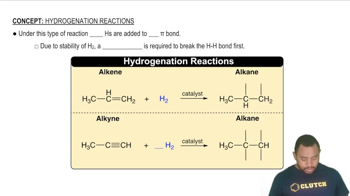Here are the essential concepts you must grasp in order to answer the question correctly.
Intermolecular Forces
Intermolecular forces are the attractions between molecules that influence physical properties like boiling points. The main types include hydrogen bonding, dipole-dipole interactions, and London dispersion forces. Stronger intermolecular forces typically result in higher boiling points, as more energy is required to separate the molecules.
Recommended video:
Intermolecular vs Intramolecular Forces
Hydrogen Bonding
Hydrogen bonding is a specific type of strong dipole-dipole interaction that occurs when hydrogen is bonded to highly electronegative atoms like oxygen, nitrogen, or fluorine. In the context of the compounds listed, H2O exhibits significant hydrogen bonding due to its O-H bonds, leading to a higher boiling point compared to H2S and H2Se, which do not form hydrogen bonds.
Recommended video:
Molecular Weight and Size
Molecular weight and size can also affect boiling points, as larger molecules generally have greater London dispersion forces due to increased electron cloud size. In this case, H2Se has a higher molecular weight than H2S, which contributes to its boiling point being higher than that of H2S, but lower than that of H2O due to the absence of hydrogen bonding.
Recommended video:
Weight Conversion Example
 Verified step by step guidance
Verified step by step guidance

